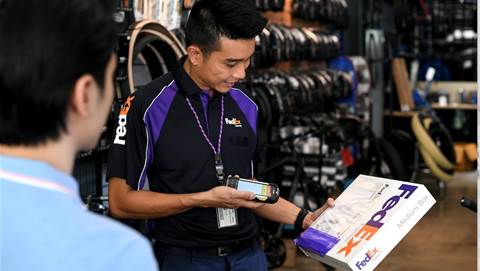Traditionally a face-to-face business, the insurance industry was faced with a sudden and unforeseen business interruption when COVID-19 struck, and had to quickly pivot to a new way of working.

One of most significant impact felt by AIA in Singapore was the shift to online and remote. Melita Teo, Chief Customer and Digital Officer at AIA Singapore, said that as life insurance is an essential service, it was imperative they could not only continue to service their customers but also make their experience as seamless and intuitive as possible.
“We were fortunate that the hard work of setting up our digital ecosystem infrastructure had already been done pre-pandemic,” said Teo.
“This meant that when in-person engagements and the usual ways of working abruptly changed, we were in good stead to continue supporting our customers, even during circuit-breaker.”
“During COVID-19, our focus shifted to enhancing system integration and improving efficiencies, so we could look for every reason to pay a claim – especially as customers faced added financial anxiety stemming from the pandemic – as well as better support our AIA Insurance Representatives under increased pressure amid social distancing.”
Challenge AIA faced
However, creating a digital system infrastructure was not without its challenges as these digital channels had to be introduced to older people who might not be familiar with technology. Unlike the younger customer segments who are considered digital natives, Teo said mature customers are unaccustomed with interacting and transacting digitally.
“We see technology as an enabler, not replacement, for people. We seek to curate simple and intuitive experiences on our digital platforms by focusing on human-centred design. Secondly, we also engaged directly with our customers through focus groups to understand their needs and behaviours,” she said.
The first step: digitising the seller and customer experience
One of the key areas that AIA looked into was ensuring that the human touch remains despite the availability of self-servicing tools.
For example, AIA Claims EZ, is an end-to-end digital claims platform that deploys artificial intelligence (AI) and machine learning to expedite the claims assessment process. With Claims EZ, customers could submit claims online while AIA Insurance Representatives are still able to provide support, especially to less digitally-savvy customers, with remote authentication feature.
By further augmenting Claims EZ with PayNow, customers were able to receive direct payouts deposited to their bank accounts. The outcome was an end-to-end claims process that has been reduced to only one to four working days from the industry average of two weeks minimum.
“To help our AIA Insurance Representatives deliver a more seamless, personalised, and service-oriented customer experience, we launched iSMART, an app that goes beyond statistics to paint a holistic story of every individual’s unique needs. By giving our AIA Insurance Representatives access to real-time data at their fingertips, such as notifications for birthdays or policy maturity dates, they can proactively identify customer touchpoints to address coverage gaps,” said Teo.
The use of digital signature capabilities allowed AIA to forgo in-person meetings and physical signatures during lockdown while boosting remote authentication. The enhanced digital signing capabilities with biometric technology also contributed to a more seamless and secure customer experience.
“We see our challenge as making sure the technology is democratised – equipping employees, AIA Insurance Representatives, as well as customers to maximise its benefits without leaving anyone behind,” revealed Teo.
As part of its long-term digital strategy, AIA also integrated its digital platforms with GovTech’s Sign with Singpass and Kofax’s SignDoc as well to boost remote authentication and digital signature capabilities for their customers – providing them with fast, secure, and convenient customer experiences without compromising on data security.
“Our digital transformation is anchored on building a simpler, faster, and more connected organisation that has the scale and agility to fulfil our brand promise of Healthier, Longer, Better Lives for more people,” said Teo.
Benefits of automation and digital experience
For AIA, introducing digitalisation initiatives that would maximise its benefits for its employees and customers was always a key objective during the pandemic.
“The implementation of Claimz EZ platform has enabled AIA Insurance Representatives to better support customers through seamless and fast digital claim submissions, resulting in an accumulation of good utilisation rates and positive feedback from users – Customer satisfaction improved by 14 percentage points, from 69% in 2019 to 83% in our Customer Experience Survey 2021,” said Teo.

Chris Huff, Chief Strategy Officer at Kofax, who has been a longterm technology solutions provider for AIA Singapore since 2012, said: “The pandemic has accelerated the adoption of digital experiences and automation. Companies that prioritise digital, cloud and automation from ‘nice to haves’ to ‘must haves’ will likely emerge stronger and with greater market share in their respective industries.”
“Technologies like eSignature, workflow automation and mobile experiences aren’t just frictionless, digital interfaces anymore. The touchless interfaces support the evolving way of work that will establish new business models.”
Before the pandemic, organisations experienced rapid growth while their administrative processes were under strain, Huff said, while now they assess and prioritise value differently while looking to automate their functions.
“The challenge faced by organisations is either a lack of demand or a lack of capacity. While the government, communications, and healthcare sectors were rushing to identify capacity and solutions quickly, the retail, hospitality, and entertainment sectors had to cease physical operations and instead move to incorporate digital experiences.”
As organisations such as AIA Singapore embrace their digital transformation efforts, working with a partner to ensure the smooth running of its digital infrastructure was essential, said Huff. “For AIA, their partnership with Kofax has been helpful to enabling their digital signature capabilities”.










